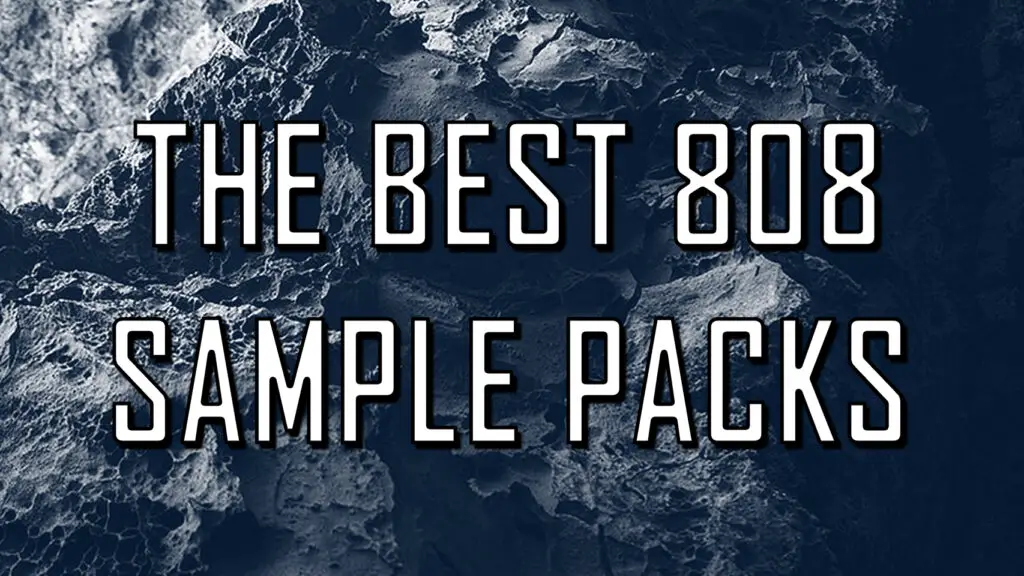

Start down the backwards road of discovering who and what inspires other people so you can better figure out where your own inspiration can come from. Find out what they are using, where they get their sound packs, who their influences are. One of the best things you can do for yourself at this stage is go to YouTube and watch other people do walkthroughs of how they produced their tracks. No matter what genre you are producing, it’s a familiar picture. You have your caffeinated beverage of choice ready to go, your favorite digital audio workstation is loaded up, and you are staring at a blank screen, ready to make some trap music. All of the sounds on Splice are royalty free, meaning all you have to do is pay for the subscription and you won’t ever have anyone knocking on your door asking for a check because you used their hi-hat way in the background of a track.
#808 drum kit samples free trial#
There’s a free trial if you need to check it out before you commit to it (something you should always do anyway), but a membership costs just $7.99 per month, and if you are regularly producing tracks it will quickly pay for itself. Splice is home to a massive library of sounds from all over the place. One of the best spots to find a huge variety of samples is Splice. Nothing wrong with those Roland sounds, they are classics for a reason, it’s just that everybody uses them. There are dozens of places to find samples of the classic Roland drum machines, the TB-303, the TR-808, and the TR-909, but if your plan is to just drop the samples into your project and not do too much post-processing you may want to use samples that are a little less recognizable. The internet will quickly become your friend on your search for samples. If you know the ins and outs of the genre you can quickly whip up a mixing template that will get you where you need to be, and crafting your track in this way will help everything stand out exactly as it should - but most importantly, you’re going to want the drum kit to be the star of the show. With a little bit of math and it will work out the same.) With that much space between the beats you are really going to want a drum kit that shines and makes its presence felt in the mix. (A good thing to remember - a song that is 150 beats per minute can also be read as 75 beats per minute. Trap is traditionally produced at a tempo that might be a little slower than other songs, nestled somewhere between 70 and 80 beats per minute. You might think that synthesizers and other sound design elements should be the focus, but if everything is perfect and your drum kit lacks some luster, your whole song will feel like it’s missing something (because it is). As important as those aspects are, though, there is one part that towers above all else when it comes to trap - the drum kit. Synthesizers, pads, textures, basslines, samples, vocal processing styles, they all need to behave a certain way in order to achieve the sound you are going for. If you are looking to get into producing trap music, it’s good to understand that there are a variety of elements that go into it. You are welcome to do additional research and find your own favorite spots, and while this list is by no means exhaustive or comprehensive, it should be all you need as a starting point.

Speaking of free - in this article we are going to be looking at a few of the best places to find free sample packs and drum kits across the internet. Other genres of music may seem difficult to produce but trap has one of the easier learning curves and an almost endless supply of sounds and resources available online, some you need to pay for but more often than not you can find them for free. The genre as a whole also has a very approachable style, with a lot of room for exploration and creativity. Now, trap has become one of the most popular genres among producers and remixers due to its ability to showcase a wide range of sounds and vocal styles over simple, yet groovy beats and layered synthesizers. When T.I.’s follow-up album “Paper Trail” hit number one on the Billboard Hot 200 it cemented the genre’s place on the landscape of music.

Originally born as a subgenre of hip hop, trap started to take on a life of its own after T.I.'s 2007 album “T.I. Trap music can feature a wide variety of drum and percussive elements but regardless of the mix of samples that you use, trap still has a very distinct and recognizable sound. Trap is one of the most highly-demanded sample pack genres on today’s market. So you want to make trap music? You’re in luck.


 0 kommentar(er)
0 kommentar(er)
